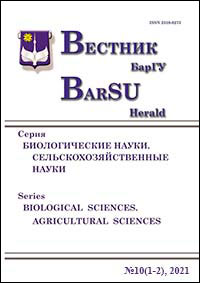MYCETOPHAGY IN TUMBLING FLOWER BEETLES(COLEOPTERA: MORDELLIDAE): NEW DATA ON THE FEEDINGOF TOMOXIA BUCEPHALA COSTA, 1854
Keywords:
tumbling flower beetles; adults; larvae; feeding type; feeding specialization; feeding mechanisms; fungi; conidia; morphological features of mouthparts; biologyAbstract
It is established that adults of Tomoxia bucephala Costa, 1854 are mycetophagus. Adults feed on spores of fungi belonging to the orders Ascomycota and Basidiomycota, on the basis of which they should be classified as polyphagоus. Their mouthparts are largely adapted to feeding on conidia of hyphomycetes, primarily due to the wide paraglossae and galea bearing hairs of different shape, length and location. When using them, adults actively scrape conidia from the surface of leaves, bark, wood and other substrates. According to confirmed data, adults of Mordellina hirayamai (Kono, 1933), Boatia albertae Franciscolo, 1985 and Glipostena pelecotomoidea (Pic, 1911) are also mycetophagоus. However, there is a reasonable assumption that this type of feeding is also typical of many other species of tumbling flower beetles from different zoogeographic regions.
Fig. 17. Ref.: 16 titles.
Downloads
Published
Issue
Section
License
Copyright (c) 2023 Вестник БарГУ Серия "Биологические науки. Сельскохозяйственные науки"
Это произведение доступно по лицензии Creative Commons «Attribution-NonCommercial» («Атрибуция — Некоммерческое использование») 4.0 Всемирная.
Авторы сохраняют за собой право заключать определенные договорные соглашения, касающиеся неисключительного распространения опубликованной версии работы (например, размещать ее в институциональном репозитории, публикация в книге) со ссылкой на ее первоначальную публикацию в этом журнале.





